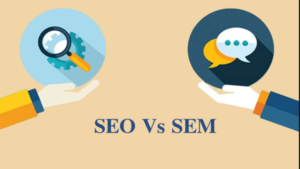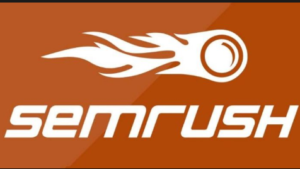Every day more than one million posts are published on the blog, but only those that are better ranked reach the desired audience through the search engine.
With so much content on the web, how do you plan to leave a brand and reach your target audience in such a crowded space?
This is precisely where SEO (Search Engine Optimization) advances to save the day. Reaching people who are looking for the type of content they offer (that is, their target audience) has a lot to do with understanding how they look for their point of interest and how search engines classify the potential results of the query.
So what is SEO and how does it work? How to do the SEO of your website? Everything will be covered in this detailed guide.
An Introduction to SEO
The goal of SEO is to rank a website high in the search engine result page. Experts in this field do this through a set of optimization processes, some of which apply to the content and website, while others will focus on off-site parameters.
On top of that, SEO aims to rank a particular website for questions that are relevant to your website.
No matter how good your content is or how well designed your website is, if you are not ranking well in SERPs (search engine result pages), you can still get stuck without traffic.
When we take a look at how CTR (click-through rate) is distributed, in the situations on the first page, things become even more interesting.
Average CTR for the first SERP rate
- 32.28%
- 16.59%
- 10.24%
- 7.08%
- 5.13%
- 3.82%
- 2.92%
- 2.28%
- 1.80%
- 1.46%
Most people looking for something never go beyond the first page of search results. According to HubSpot, this number reached 75% in 2014.
The pair we provided with the CTR above and you get to know how much traffic you are missing by simply ranking on another page.
While you can find quick sheets and simple tips that will make your SEO efforts very simple, the truth is that there is no such thing. Most of these superficial articles cover some aspects of the optimization process and, although SEO is not inconsistently complex, it must be done completely, not through shortcuts.
In this guide, we are going to separate the entire process and try to clarify SEO as a whole and explain why it is not just a commodity or other marketing aspect. SEO encompasses all aspects that will make your web presence successful and attractive.
Types of SEO
A well-rounded SEO strategy will strategically leverage all types of SEO to generate real results. There are three main types of SEO:
1. On-Page SEO
On Page SEO is related to the content and meta tags of your website, such as headlines, page content, and structure. SEO on the page helps search engines understand and classify content. It is the process of optimizing each page to obtain a better ranking and generate relevant traffic. This type of SEO include:
A. Keyword research
This is the most important part of SEO on the page. Start by finding the best main keyword for your page: it must be accurate and relevant to your content, users must search for it and you must be able to compete for its ranking. Assign a primary keyword and some related to its content, and structure a similar content plan. If you are looking to offer content about “Content Marketing” or “Digital Marketing”, thoroughly investigate what people are looking for and in which keywords you can compete.
B. Content Creation
Create original, unique and high-quality content that has a title that contains the main keyword. Long format content {over 800 words} has a better chance of being classified. Make sure the content is well researched, well organized and scannable. In addition, posting frequently and updating your previous content is another way to improve ranking.
C. Customization
Use the target keyword and secondary keywords appropriately in the body copy. There must be a 2-3% keyword density in your content. Ensure good HTML tagging: title tags, meta description, outline codes, and subtitles. Use the “HTML Improvement Report” from Google Search Console to diagnose any problem. Adding internal and outgoing links, images and assigning relevant tags and categories also helps optimize your website.
2. Technical SEO
Technical SEO deals with everything but the content on your website. It is a process of improving the user experience through improvements in site infrastructure and navigability. This makes it easier for search engines to crawl, which they reward through better rankings. The more links between the pages of your site, the easier it is for the crawler to access them. This type of SEO focuses on improving site speed, accountability, indexing, crawlability, site architecture, data structure, and security.
Google rewards websites that are fast, secure, responsive and easy to navigate – Amazon is a great example of such a website.
3. Off-Page SEO
Off-page SEO is related to the relationship your website shares with the rest of the Internet. It includes strategies to build the reputation, the credibility of a website and share an ecosystem that generates information.
Much of this comes from the creation of high-quality backlinks: a large volume of high-quality backlinks that redirect traffic to your website teaches search engines to trust your content. To be a more reliable and credible source of content, take time to create relevant, high-quality backlinks and guest posts. The quality of the links is more important than the volume of the links. Large companies, older companies and those that occur very often tend to have better off-page SEO performance.
Another external factor that affects off-page SEO includes good results on social media and PR. This means the quality and number of social signals, which gives credibility to your website.
Working on only one of these types of SEO will not provide favorable results. Instead, choose your quick earnings from each type of SEO and prioritize accordingly. It is equally important to work on the content of your website, its infrastructure and its external reputation.
Black Hat vs White Hat
To understand SEO, we must first talk about the division between two main philosophies.
In most cases, when people are referring to SEO, they are talking about White Hat SEO, which we will discuss in detail in this guide.
As far as the Black Hat SEO approaches are concerned, we are only going to give you bumpy edges because we don’t like it for various reasons.
Black Hat
As the name implies, it has much less to do with the public and does not care about their wishes. The goal is to obtain as much exposure as possible, by any means necessary (breaking and folding the rules).
Such approaches are mostly used by people who want to make a few thousand rupees and then disappear.
In most cases, they disappear, since Google resists websites that use tricks to rank.
Keep in mind that when you wear Black Hat, you can get quick exposure, but this approach is not sustainable. Once you are marked as spam, you will definitely lose your favorable ranking position or, in some cases, you will even be de-indexed, which means you will never appear in the search results, NEVER.
After this happens, you have two options left.
One: you can leave your domain and continue applying the same approach to another, basically starting from scratch.
Option number two is to contact a white hat SEO expert to correct their irregularities. This process takes a lot of time and is a lot more expensive than just doing White Hat SEO from scratch. However, once your site is penalized, you will have to resume your work with a new site, as it is really rare for your content to be re-indexed in search engines.
White Hat
The white hat approach always places the audience and their needs as the central focus of their operation; Creation of quality content and services to meet the goals and regulations of the auditorium proposed by search engines.
Through this approach, your online presence can grow and, after a while, become a valuable resource that can contribute its own independent income to your overall budget.
Unlike the Black Hat strategy, this approach is a continuous process that all successful online marketers resort to improve their online presence as it is the only way to gain access to most of the traffic in the online environment.
If you are building a web presence as a legitimate business, you will definitely have to opt for the White Hat approach, since the “dark side” can damage your long-term efforts and, ultimately, cannot provide a return of the investment.
How does SEO work?
When you search on Google today, you see a series of results, including ads, featured snippets, the “people also ask” section and organic results. This was not always the case: not long ago, Google responded with ten blue links.
The objective of a search engine is to connect a search engine with the most relevant and high-quality results; To achieve this, search engines constantly improve their algorithm. Over time, Google began adding new response formats to offer a better search experience. User behavior indicates that some queries are best satisfied with different content formats.
To understand how SEO works, we must first answer the following question:
How do search engines work?
Search engines send crawlers to find new and updated content and follow the links on these web pages to find more content. This information is stored in an index, a large database of all the content that they have discovered and that deserves to be displayed as results. When someone runs a search query, search engines scan their index for the most relevant content and classify it according to the degree of resolution of the query.
For a website to succeed, it must be trackable and indexable. There are several ways to ensure that Googlebots finds your important pages. A crawler should be able to discover its content from links on the Web and a route of links within its site to guide it from one page to another. You can also add “outline codes” as instructions to search engines on how you want your website to be treated. Finally, to decide on relevance and ranking, search engines use algorithms, a formula by which indexed information is retrieved and sorted. These algorithms are constantly updated to improve search quality.
Now that we have a basic idea of why search results appear the way they do, let’s analyze how you can succeed in SEO.
SEO Infrastructure:
- The construction of relevant and high-quality links is a fundamental investment in your SEO. Backlinks and internal links are essential. The more you acquire, the better your ranking in the SERPs.
- Design a content plan based on keyword research and share high-quality optimized content with your audience. Your content should be directed not only to readers but also to search engines.
- User experience is the key: improve the speed, infrastructure, and architecture of the site. Search engines tend to rank faster and easier to track websites faster.
- Invest in responsive design and optimize your content for mobile users.
- The voice search is here and it’s great: optimize for long-tail keywords, user intent and featured snippets.
However, as we have stated before, SEO tactics change and evolve all the time. Make sure you have your basics covered and constantly research, combine and experiment with multiple SEO methods. Follow the results closely and take advantage of the methods that work for you to stay ahead of your competitors. It is a constantly growing and constantly changing science and SEO specialists must stay agile!
SEO: Basic Strategies
The first search engines were relatively ineffective since they couldn’t do much more than search for pages that included specific keywords. Search engines have evolved over time and are complex enough to use hundreds of factors in their search algorithms.
Search engine optimization, or simply SEO, when implemented successfully, use a combination of hundreds of methods and strategies to attract users to a website. They include the following:
- Use of widely used keywords or phrases related to the purpose of a site. When a user writes a phrase in a search engine, the search engine reviews the sites that contain that phrase.
- Constant updates of the website. Sites that have not produced new content in a while will be considered less relevant. Any broken link or similar failures will reduce the ranking of a site.
- Attention should be paid to the basic usability and design of a website. Search engines take into account the hierarchical structure of the website and the ease of navigation, as well as the quality of the information and the content it contains. The simplest sites with clear, concise and useful language tend to occupy a higher place in search results.
- Find ways to make other websites link to yours (return links). A search engine sees this as an indication that your site is valuable enough to be referenced by others. The higher the site that links it, the better.
- Do not show your company name or other important marketing material as part of an image, since the text of an image will not be included in the indexed results of a search engine.
The Conclusion
We have counted the many benefits of SEO. It is a smart investment if it is the growth that is sought. However, it is a complex science to master: search engine algorithms change frequently, as do SEO tactics. Looking for help? Do you have any questions? Comment below and we will be happy to help you!





